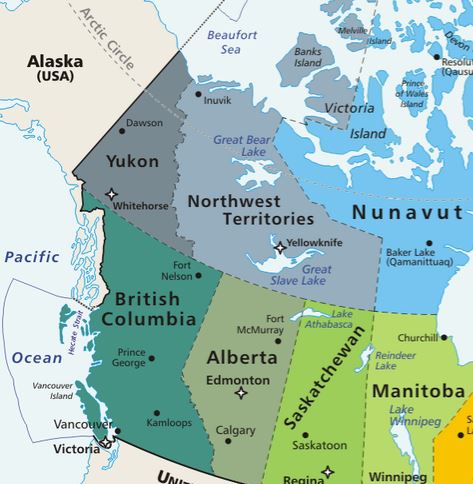On Friday, the Canadian government introduced C-48, the Oil Tanker Moratorium Act
It’s no longer living as a temporary moratorium or simply a political threat. On Friday Canada’s federal government introduced legislation that will turn its informal ban on crude oil tanker traffic off the North Coast of British Columbia into law.
This new law, once enacted, would dash hopes of Canadian oil producers for a Canadian-domiciled Pacific export takeaway port to send its crude oil to Asian markets, and likely eliminate the need for the proposed Northern Gateway pipeline that would have brought oil from Alberta to export facilities on Canada’s Pacific coast.
“This legislation will prohibit oil tankers carrying crude and persistent oils as cargo from stopping, loading or unloading at ports or marine installations in northern British Columbia. It will provide a high level of protection for the coastline around Dixon Entrance, Hecate Strait and Queen Charlotte Sound,” the government’s press release said.
The International Tanker Owners Pollution Federation (ITOPF) defines persistent oils as “ones that break up and dissipate more slowly in the marine environment and usually require a clean-up operation. Persistent oils typically include crude oils, fuel oils, lubricating oils and heavier grades of marine diesel oil.
“These oils pose a potential threat to natural resources when released, in terms of impacts to wildlife, smothering of habitats and oiling of amenity beaches. In contrast, non-persistent oils will dissipate rapidly through evaporation. As a result, spills of these oils rarely require an active response. Non-persistent oils include gasoline, light diesel oil and kerosene,” according to the ITOPF.
The proposed moratorium area extends from the Canada/United States (Alaska) border in the north, down to the point on British Columbia’s mainland adjacent to the northern tip of Vancouver Island, and also includes Haida Gwaii, the Canadian government said.

Penalties for shippers who violate the ban could go as high as $5 million, the Canadian government said.
“Tabling this legislation is another step towards fulfilling our promise to formalize the tanker moratorium on British Columbia’s north coast,” Marc Garneau, Canada’s Minister of Transport, said in a press release.
The proposed legislation complements the existing voluntary Tanker Exclusion Zone, which has been in place since 1985, the Canadian government said.
Smaller vessels, local deliveries permitted
“Vessels carrying less than 12,500 metric tonnes of crude or persistent oil as cargo will continue to be permitted in the moratorium area to ensure northern communities can receive critical shipments of heating oils and other products.”
Legislation puts sales of Canada’s emerging light oil at risk: CAPP
The Canadian Association of Petroleum Producers said the proposed legislation could “significantly impair Canada’s oil and natural gas resources from reaching new markets and ensuring Canadians receive fair market value for its resources. Access to tidewater and the ability to export from Canada’s West Coast fulfills the government’s national commitment to get our resources to tidewater, increasing the long-term prosperity of Canadians,” CAPP said.
“Export of emerging light, tight oil resources off the West Coast could be at risk, going beyond the original intent of the federal government when it first announced the moratorium.
“The federal government’s commitment to its Oceans Protection Plan ensures our coastlines are protected, rendering the moratorium unnecessary,” CAPP said in a press release.
Northern Gateway
Canada’s former Conservative government had approved Northern Gateway, which would have carried the oil from the Alberta oil sands to a port in British Columbia for export. But for months Prime Minister Justin Trudeau said he opposed the pipeline—particularly the route through British Columbia.
Trudeau’s Liberal government promised a moratorium on oil tanker traffic along the coast of northern British Columbia which was viewed as making the pipeline unfeasible. Friday, Trudeau’s government made good on that promise.
“On the Northern Gateway pipeline, I’ve said many times, the Great Bear Rainforest is no place for a crude oil pipeline,” Trudeau told reporters in Montreal last summer,” Reuters reported.
In a letter of instruction, Trudeau told Transport Minister Marc Garneau to “formalize a moratorium on oil tanker traffic on the north coast,” the Vancouver Sun reported late in 2015.
“A ban would prevent hundreds of tankers each year from carrying diluted bitumen extracted from Alberta’s oilsands and piped to northern B.C. from being shipped for export overseas,” the Sun reported.
“A legislated oil tanker ban will send a strong message of positive change to all British Columbians, while rebuilding the trust that has been lost over almost a decade in the battle over Northern Gateway,” Caitlyn Vernon, campaigns director at Sierra Club BC, said in a statement. “We want Prime Minister Trudeau to know he has tremendous support for this promise to legally protect B.C.’s north coast from oil tankers.”
In its press release today, CAPP said that Tankers have safely and regularly transported crude oil from Canada’s West Coast since the 1930s and that there has not been a tanker navigational issue or incident in about 50 years from the Port of Vancouver.
Canada’s oil industry looking for alternative markets for its oil
The U.S. has been Canada’s biggest oil customer. But the two countries’ long-term friendly trade relationship stubbed its toe under the prior U.S. administration when President Obama refused to issue the final step—Presidential approval—after almost eight years of permitting hell and delays for TransCanada’s Keystone XL pipeline. The Keystone XL was TransCanada’s long-suffering 800 mile piece of pipe that would have completed the planned route of the existing Keystone pipeline system, taking Canada’s oil from Alberta to central U.S. and Gulf coast refineries via a direct route. The oil still travels south without the Keystone XL.

After that the Canadian energy industry started seriously looking at potential customers to the east and west and planning ways to get the oil to ports that could send its product to Europe and Asia. Northern Gateway would have been a straight shot to Asia via British Columbia, but if this bill becomes law, that idea is more than likely dead. Keystone XL, however, was brought back to life under the Trump administration and TransCanada dropped its $15 billion ‘breach of NAFTA’ lawsuit against the U.S.









